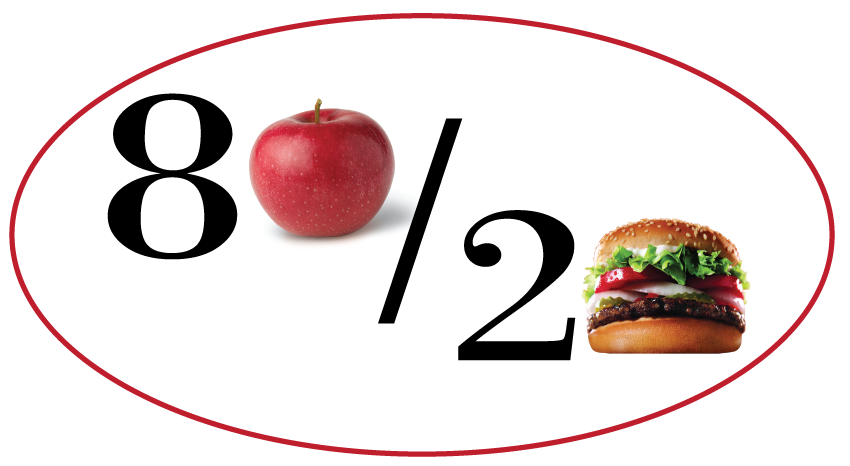Eating For A Healthy Heart
TEXARKANA, Ark. –
We have all heard that heart disease is the number one cause of death in the United States. It is nondiscriminatory and doesn’t care if you are male or female; it also doesn’t care what race you are either. It can affect all of us.
Learning to eat heart healthy may involve making some changes in the way you eat for the rest of your life. Don't approach it as a short-term diet that you will quit someday. It is a lifestyle change.
Adopt the 80/20 Rule!
To have success with this lifestyle change, adopt what is known as the 80/20 rule. About 80% of the time you can choose lower fat meats, dairy foods, or use low fat cooking techniques, and higher fat choices about 20% of the time. This allows you to have some freedom to choose those foods you really love.
How do I get started?
To get started on a heart healthy diet, review your current diet. Maybe you're already following many of the recommendations and only need to make a few adjustments in choices or preparation.
Take the slow and steady approach. Make one change at a time. This gives time to adjust and develop new habits before moving on. Research indicates you'll be more successful this way.
Eating more fiber may help lower blood cholesterol levels. Soluble fiber, for example in oats, may help take cholesterol away before it can be absorbed into your bloodstream. Start out with whole wheat, oats, and brown rice before branching out to barley and bulgur. Try substituting about one-third whole-wheat flour for white flour when baking. Eat more muffins, pancakes, or cookies that include oatmeal or whole wheat flour.
Evaluate which type of milk you are drinking. Whole milk contains a minimum of 3% butterfat. Many people find 2% milk is an acceptable alternative. Continue taking gradual steps down in fat content, giving the palate time to adjust in between. Try reduced-fat cheeses and sour cream too. The difference in taste may be undetectable in many recipes.
There are many ways to reduce the fat in your diet that you are probably already doing:
- Use lean cuts of meat more often. Lean cuts are taken from the loin or round instead of shoulder or rib. Look for the words loin or round when selecting a cut of meat. Use lean cooking methods – broil or grill, roast, simmer, or stew.
- When using cheese, choose sharp cheeses to get more flavors, even though you are using less cheese. Try reduced fat cheese. The taste and texture is the same; they are made with reduced fat milk instead of whole milk.
Download your copy of Listen to Your Heart, or contact the Miller County Extension Office, 870-779-3609 or visit us in room 215 at the Miller County Courthouse. We're online at cdue@uada.edu, on Facebook at UAEXMillerCountyFCS, on Twitter @MillerCountyFCS or on the web at uaex.uada.edu/Miller.
Stuffed French Toast uses egg substitute which are made with egg whites and contain no fat and cholesterol. It is a recipe from the American Heart Association.
Stuffed French Toast
- 6-1 inch thick slices French Bread
- 1/4 cup nonfat or light cream cheese
- 1/2 teaspoon finely shredded orange peel
- 1 teaspoon orange juice
- Egg substitute to equal 3 eggs*
- 2 tablespoons skim milk
- Vegetable oil spray
- Cut a pocket horizontally into each slice of French bread, being careful not to cut all the way through; set aside.
- In a small bowl, stir together cream cheese, orange peel, and orange juice.
- Spoon about 1 heaping teaspoon cream cheese mixture into each bread pocket. Spread evenly with a knife.
- In a shallow bowl, beat together egg substitute and milk.
- Place a slice of stuffed bread in the egg mixture. Let it soak about 30 seconds. Turn bread over and let it soak another 30 seconds. Repeat with remaining bread.
- Spray a griddle or large skillet with vegetable oil. Place over medium heat.
- Cook bread slices 3 to 4 minutes on each side, or until golden brown. *
- Instead of using egg substitute, you can also use egg whites in place of whole eggs. Use 2 egg whites for each whole egg called for in a recipe.
Nutrition Information - 2 slices yields: 242 calories; 42 grams carbohydrates, 1 gram total fat; 2 milligrams cholesterol; and 646 milligrams of sodium.
By Carla Due
Miller County Extension Agent - FCS
The Cooperative Extension Service
U of A System Division of Agriculture
400 Laurel Street, Suite 215 Texarkana AR 71854
(870) 779-3609
cdue@uada.edu
Related Links
